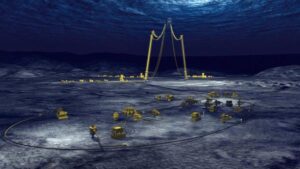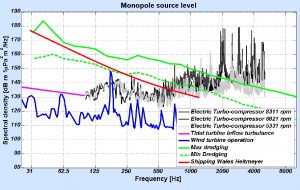
“Subsea” Processing Equipment
Advancing technologies in offshore oil and gas extraction are allowing fossil fuel extractors to venture into ever deeper waters, and drill even deeper wells. Extraction and production operations are happening at water depths of up to two miles, and bore-hole extents of five miles out from the puncture point, under extreme pressures and physical conditions.
The materials that come out of these wells are not all just oil or gas, but often some of both, along with brine, sand, gravel, and cuttings. Because these operations are so deep it would take a lot of energy to bring all of the materials and substances to the surface, remove what is needed, and dump the rest. So a large part of the technological advancement is in the equipment that can pre-process and separate the product from the waste, pump the desired product to the surface and re-inject the waste back into the earth.
Extreme pressures are generated to drive the system – both pumping product to the surface and re-injecting waste back into the earth. I have always been concerned that the high-pressure handling of liquids, gas, and solids could create considerable noise. Years ago when I shared my concern with industry colleague he indicated that some of the equipment “can be real screamers.” That comment – along with all other accounts were only anecdotal.
Finally last year some bio-acoustics colleagues involved in a passive acoustic assessment of Sei whales around an offshore development area had to abandon a lot of data because it was compromised by the sounds of subsea operations. They were only looking for whale calls and did not have a calibrated way of assessing the sound levels of the noise, but for me it was the first evidence that processing noise could mask biological sounds.

Seafloor compressor noise particularly noisy in the “mid frequency sonar” range.
Then earlier this year some researchers out of Denmark measured the sound of a 11MW gas compressor “on the dock” and modeled it in water. The model revealed that there was a huge amount of noise: 150dB continuous broadband noise from 125Hz – 4kHz, and peaks of 180dB between 1kHz and 5kHz (all re: 1µPa^2/m^2/Hz) – enough noise to qualify this compressor as “a real screamer.”
While this one compressor is not representative of every piece of hydrocarbon processing equipment mounted on the seafloor, the noise level is alarming – and a confirmation of my concern that this rapidly expanding technology could seriously compromise the bioacoustic habitat for a whole lot of ocean life.
I have been told by colleagues in the hydrocarbon industry that while operators are aware that there is noise, most of them are in the engineering field and thus are not thinking about any potential biological impacts that their amazing engineering feats might cause. Biological impacts are just not on their sonar.
It is one of our top objectives to let them – and regulators know because if my informed (and mildly substantiated) hunch is correct, this noise could become a really big problem. But we will need more than a couple of data points; we’ll need to get out into the water with equipment to get a real sense of the scope and scale of the noise so we can know for sure. The sooner that this is known the easier it will be to mitigate the noise through designing and incorporating quieting technologies – before the equipment gets installed two miles down on the seafloor.


